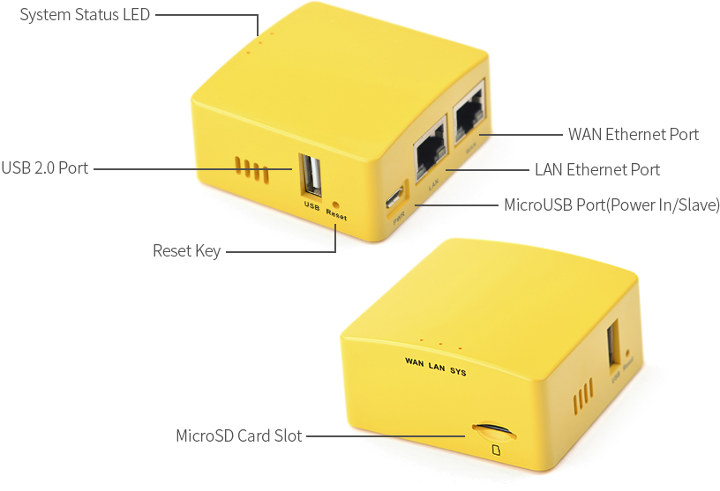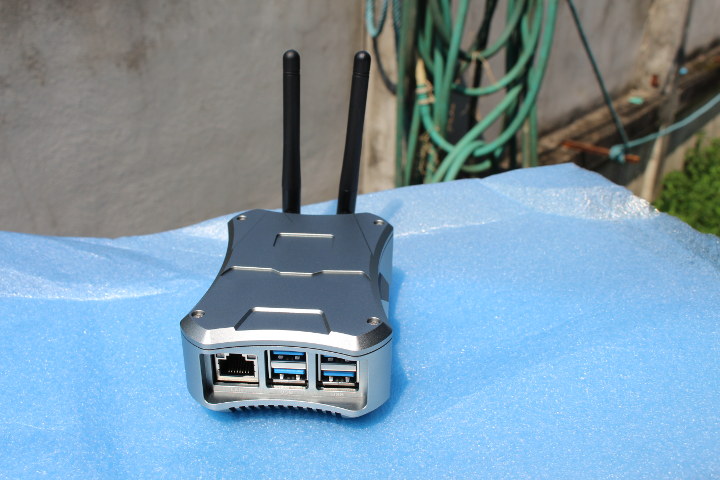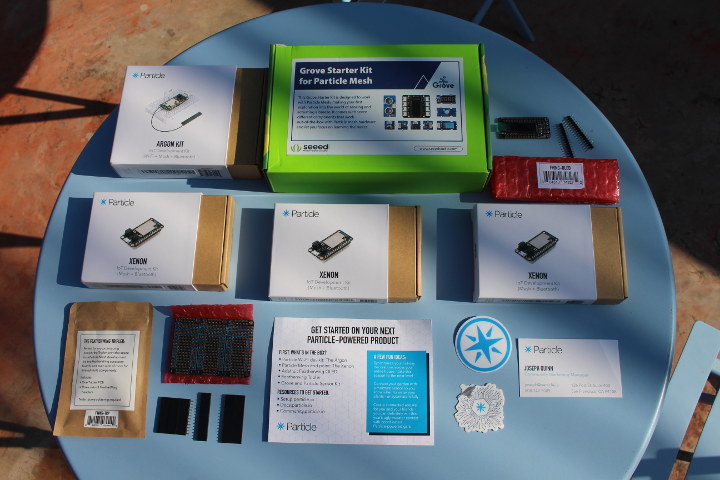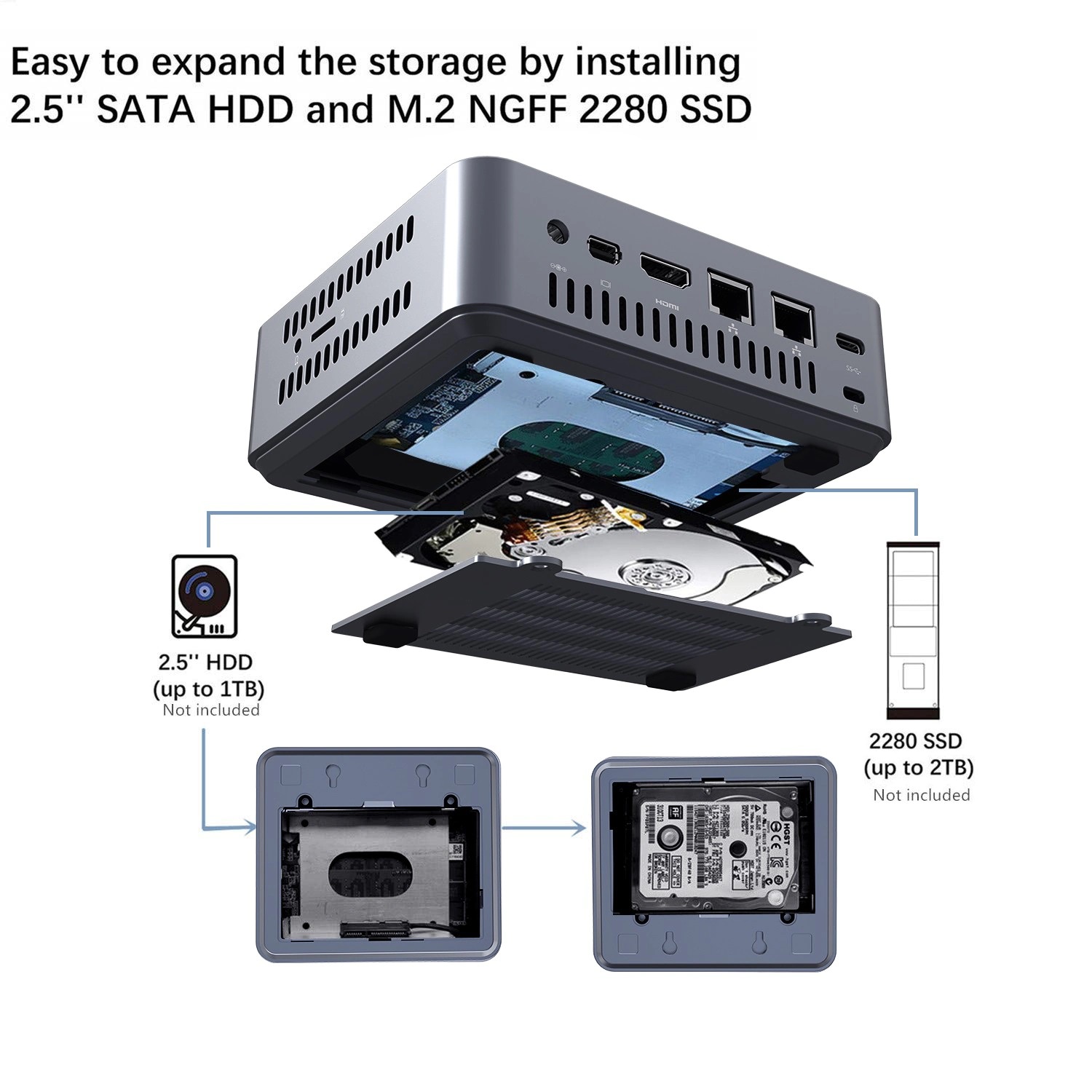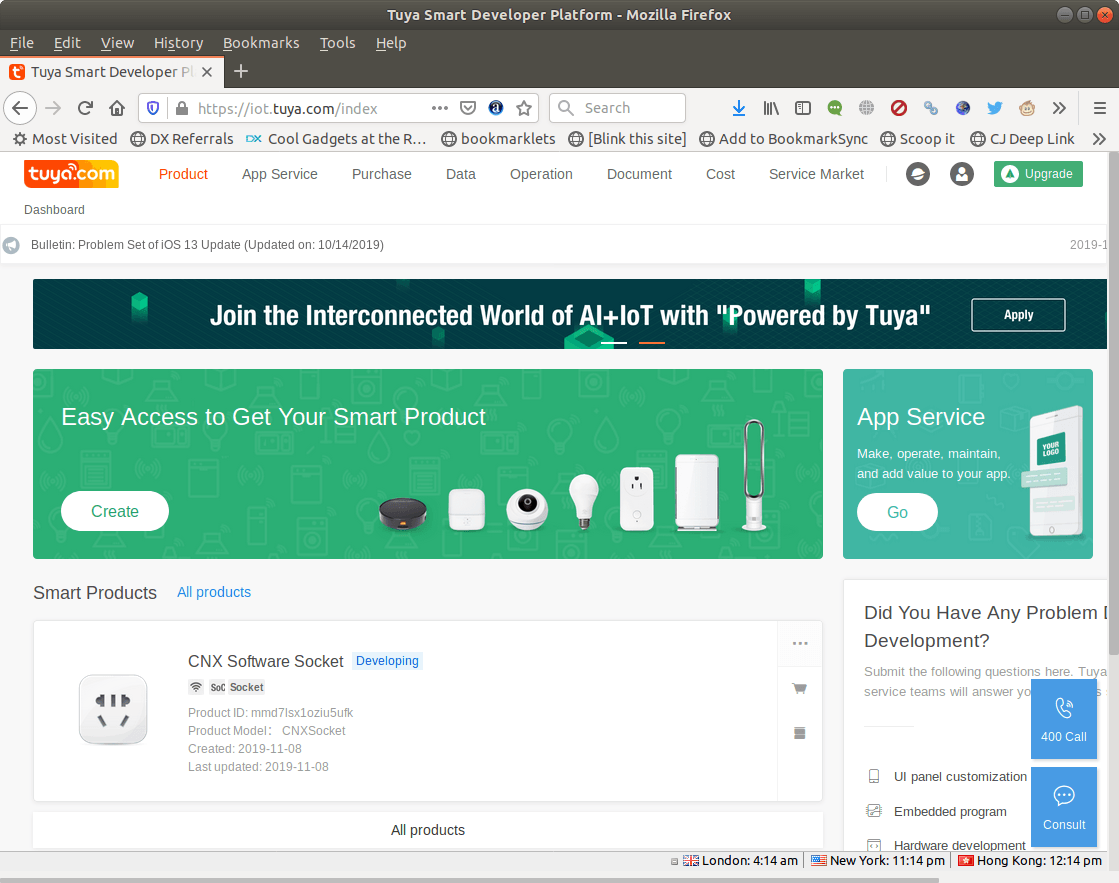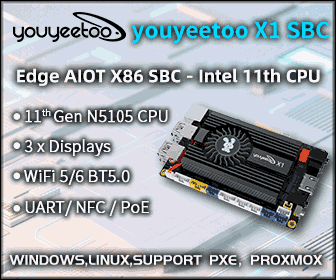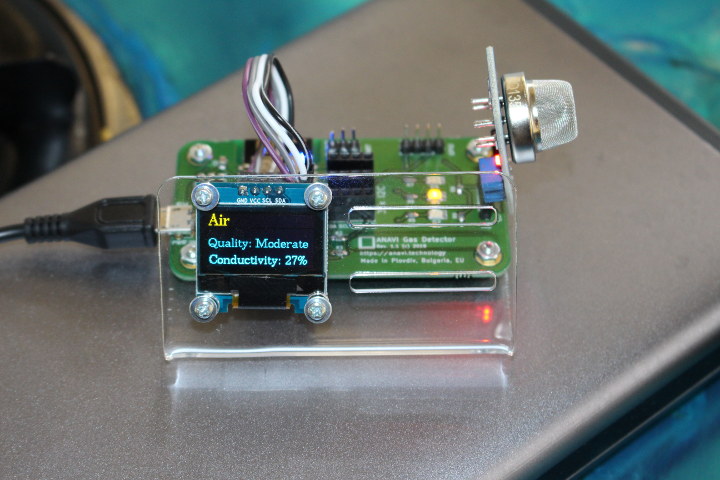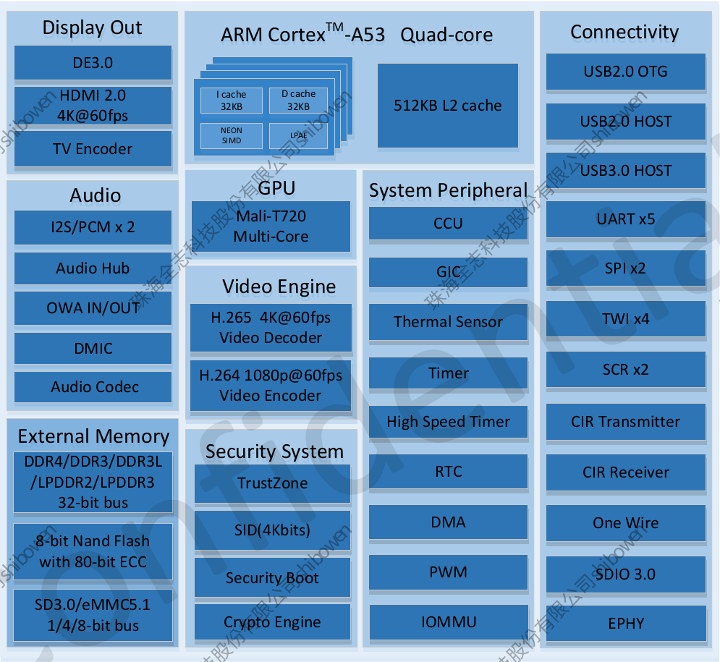FriendlyELEC launched NanoPi R1 SBC & Gateway earlier this year with Allwinner H3 processor, two Ethernet ports, as well as WiFi and Bluetooth connectivity. The design makes use of both Ethernet on the processor, but that also means on Gigabit Ethernet port had to be combined with a Fast Ethernet processor. The company has now added a USB to Gigabit Ethernet bridge to their latest NanoPi R1S board meaning it’s now a dual Gigabit Ethernet SBC, but with the caveat that the port behind the USB bridge is limited to USB 2.0 speed (480 Mbps), and with overhead the USB Ethernet bandwidth is around 330 Mbps. There are two versions of the board, namely NanoPi R1S-H3 and R1S-H5 with respectively Allwinner H3 32-bit processor, and Allwinner H5 64-bit processor. Apart from the different processors, both boards share the same PCBA and specifications: SoC NanoPi R1S-H3 – Allwinner H3 quad-core Arm […]
Giveaway Week – NanoPi M4V2 SBC & Metal Case Kit
Let’s finish giveaway week 2019 on a high with FriendlyELEC NanoPi M4V2 single board computer, and its metal case kit. The board features a Rockchip RK3399 processor with 4GB LPDDR4 RAM, and the metal case kit allows the addition of an NVMe M.2 SSD as well. I tested the mini PC with FriendlyCore Desktop based on Ubuntu 18.04, since at the time, Armbian was still not working with the updated board equipped with LPDDR4 memory, and Android requires an eMMC flash module which was not part of the kits I received. NanoPi M4V2 performed fairly well in the case, but the fan is quite noisy, and somehow the RAM bandwidth was almost half of the one in the earlier NanoPi M4 board with DDR3 memory, which is the opposite one would expect. Probably related to some software tweaks as explained in the comments section of the review. I received two […]
Giveaway Week – Particle Mesh IoT Development Kit
In early 2018, Particle introduced three nRF52840 Bluetooth 5 boards, also supporting the company’s Particle Mesh technology, and selling for as low as $9. Later that year, the company send me what they call Particle Mesh IoT development kit with several of those boards to get started with their mesh networking solution. That’s what I’m offering as the 6th prize of this giveaway week. With this kit on hand, I wrote a Particle Mesh networking getting started guide showing how to configure the board in Particle.io dashboard, and easily push a new program to multiple Xenon Bluetooth 5 + Mesh boards using an Argon WiFi & Bluetooth 5 + Mesh as the gateway. I’ll give away the full kit shown in the top picture which includes: The Argon kit (ESP32 WiFi + Bluetooth + Mesh) A Grove and Particle Sensor Kit with various modules and a shield An Adafruit Featherwing […]
Single’s Day 2019 Coupon Codes and Promotions
Singles’ Day, taking place on November 11 (11.11) every year, is the Chinese equivalent of Black Friday with shops in China offering deep discounts on their products. Popular Chinese online shopping websites catering to oversea markets also take advantage of the event to organize events and promotions for their customers. So just like I did in 2017 and 2018, I posted a list of Singles’ Day 2019 promotions in shops such as Banggood, GeekBuying, Aliexpress, GearBest, and others. Aliexpress Aliexpress Global Shopping Festival 2019 is already started in the sense you can browse products on the website, add them to your cart, and pay a lower price if you check out on November 11. Most shops will have discounts, but some of the most relevant to this site include Shenzhen Xunlong Software which will offer discounts of up to $8 for their Orange Pi Boards, Rak Wireless lowered the price […]
Kodlix GK45 Gemini Lake Mini PC Supports up to 3 SSDs, 3 4K Displays, and Dual Gigabit Ethernet
Kodlix GK45 Mini PC with up to 3 SSD and 3 Displays Kodlix computers and accessories are designed for industry and home use. The GK45 is the latest mini-PC built for 4K video options and features, and supports as many as 3 SSDs. The GK45 has 1 x DP, 1 x HDMI, 2 x Ethernet Ports, as well as a USB Type-C display/power port. GK45 Mini PC Storage Expansion Options The GK45 has expanded storage capabilities, and can support up to 3 SSDs, in various formats, starting with 64 GB of eMMC (on-board) or M.2 NVMe 2242 128GB SSD, with support for expansion as follows: M.2 NGFF 2280 SSD up to 2TB SATA 3.0 6.0Gbps M.2 NVMe 2242 SSD up to 1TB 2.5″ SATA HDD up to 2TB SATA 3.0 6.0Gbps GK45 Mini PC Basics The GK45 runs an Intel Celeron J4105 Gemini Lake processor, that runs at a speed […]
Tuya helps you easily Design & Manufacture your own Smart Home Solutions
I was recently informed about LSC Smart Connect 3 door sensor selling on Action discounter with over 600 stores across the Netherlands, Belgium, France, Germany, Luxembourg, Austria, and Poland. The door sensor is based on ESP8266, and people have bought a few and flashed their own open source firmware converting the device into a multi-purpose sensor device with ESPNOW protocol that enables direct and low-power control of Espressif devices without the need of a router. The module inside the door sensor is called TYWE3S, which one document on the FCC website refers to as “Tuya WiFi module” and further mentions “TYWE3S is a low-power consumption module with built-in Wi-Fi solution designed by Hangzhou Tuya Technology Corporation” that is based on ESP8266 WiSoC with 1MB flash, 50 kB RAM. One person in the LetsControlIt forum thread linked above explains the stock firmware can be updated over-the-air via a Raspberry Pi 3/3+ […]
Giveaway Week – ANAVI Gas Detector Starter Kit
Leon ANAVI makes from fun little boards for home automation, either ESP8266 based, or pHAT for Raspberry Pi boards. Earlier this year, I wrote about my experience getting ANAVI Gas Detector with Home Assistant. Now that’s I’m done, I’m giving away the starter kit that includes the ESP8266 board, an acrylic case, an OLED display, a USB to serial adapter, and MQ135 air quality sensor. The board is open-source hardware, meaning everything is open source from the KiCAD files to the Android sketch running on the board. It’s very easy to get started, as you can just connect a USB cable for power, and after configuring WiFi you can see the air quality – either Poor, Moderate or Good – displayed on the OLED display, and you can easily see the data in a web dashboard after setting up Home Assistant. Everything shown in the top photo will be given […]
Allwinner H6 VC200-OS Processor is a Cheaper Version Allwinner H6 SoC without PCIe, GbE, Camera…
Allwinner H6 SoC has been around a few years, first used exclusively in Zidoo H6 Pro TV box, but then finding its way into other TV boxes, and some single board computers such as Orange Pi 3 or Pine H64 model B. There’s no a cost-down version called Allwinner H6 VC200-OS with most of the same features but without the mostly useless PCIe port (since it does not work well on H6), and other interfaces. I’ve gone through Allwinner H6 (V200) specifications and highlighted the ones missing or updated in H6 VC200-OS using stricken bold or bold text using information from the datasheet. CPU – Quad-core ARM Cortex A53 with NEON, hardware Java acceleration, and FPU 3D GPU – Dual shader ARM Mali-T720 with support for OpenGL ES3.1/3.0/2.0/1.1, OpenCL 1.1/RenderScript, Microsoft DirectX 11 FL9_3 Memory I/F – DDR4/DDR3/DDR3L/LPDDR2/LPDDR3 interfaces Storage I/F – 1x eMMC 5.1 flash interface, 1x NAND Flash […]


